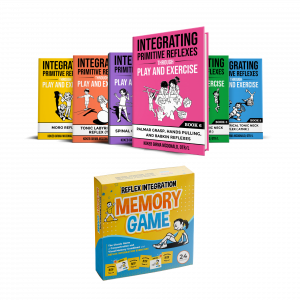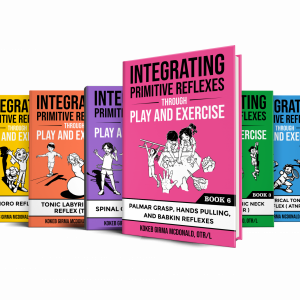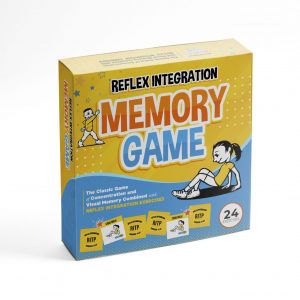Stepping back this week from our typical reflex integration conversation to address the broader context reflex integration fits within: helping our young people succeed in the environments around them. This is a great article for teachers and parents, but also good reminders for us OTs and PTs.

One common topic I discuss with teachers and parents is supporting the low-energy child—they may be affected by sickness, fatigue, lack of sleep, low tone, boredom, sensory processing issues, or more. There are some simple things teachers, parents, and therapists can do to help engage low-energy children:
1) Movement Breaks: movement movement movement! You can have 5 minute breaks throughout the day and have the children do simple activities such as jumping jacks, running, and pushups before they get back to their work. Check out our Reflex Integration Through Play book series and our brand new Memory Game for easy-to-use exercise ideas.
2) Snacks & Drinks: have some cold drinks and snacks accessible. Another option is chewing gum. If you’re working in a classroom environment, be sure to consult with parents first.
3) Visual Schedule and Timer: having a set amount of time to complete a task encourages kids to stay on task and focus. You can try and make a game out of it, like “You have 5 minutes to complete your worksheet. How many problems can you solve in 5 minutes?”
4) Music: you can try using headphones during individual work.
5) Tone of Voice: examine your energy and tone. Remember the teacher in the movie Ferris Bueller’s Day Off? The point is to be dramatic, exciting, and energetic. Yes, you will be exhausted at the end of the day but the energy of your classroom and therapy environments will definitely change.
6) Surprises: keep things somewhat unpredictable so the children don’t get used to routine and become bored.
7) Visual Stimuli: it helps to have bright colors and bright lights in the classroom. If possible use natural lighting.
8) Multi-sensory Workstations: have alternating work stations. You can use a therapy ball or move-n-sit cushions on their chairs, standing tables in the corner, or a slant board to write on.
9) Breaks: giving your kids regular breaks can keep them stay engaged and keep their energy up.
10) Engaging Work: Move around the class when you are teaching, do something meaningful and purposeful (e.g. add a project as part of the session that is interesting to students)
Hopefully that helps you better support the development of the kids you care about!



